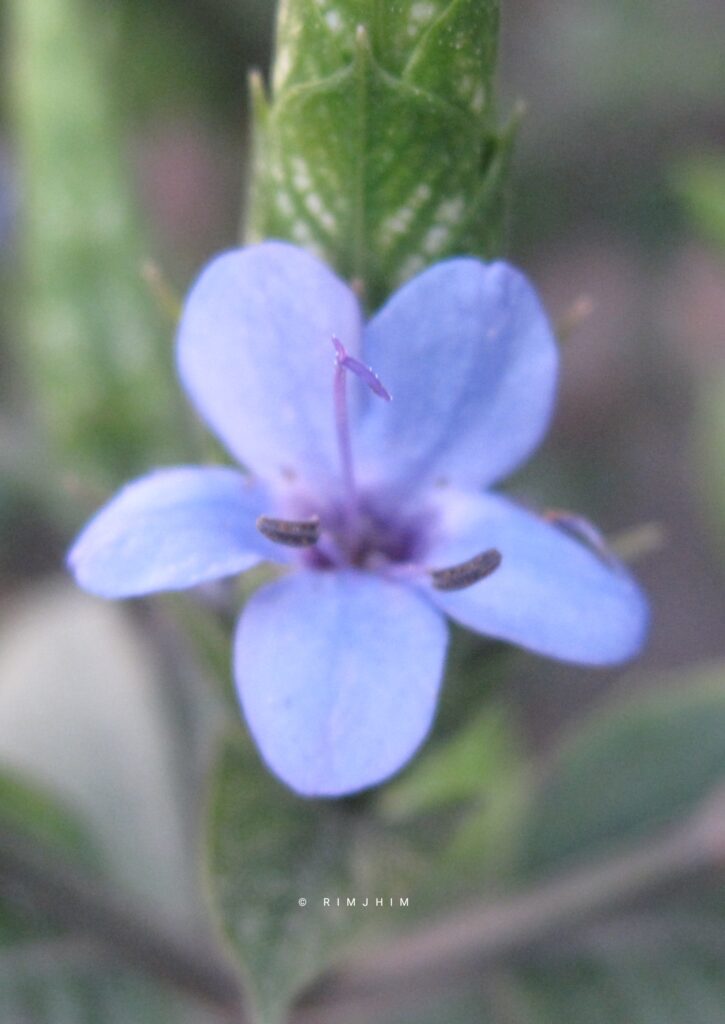Blue Sage, Eranthemum • Hindi: गुलशाम Gulsham • Tamil: Neelamulli • Telugu: Neelambaramu
Botanical name:Eranthemum pulchellum
Family:Acanthaceae (Acanthus family)
Synonyms: Eranthemum nervosum, Justicia nervosa, Daedalacanthus nervosus
Blue Sage is a woody perennial herb or shrub. Leaves opposite simple, stalked, usually entire, elliptic or ovate-elliptic, 10-24 x 4.5-8 cm, basally narrowed, prominently nerved, lateral nerves about 10 pairs, long pointed. Flowers are blue, purple, violet or purplish-white at branch-ends or in leaf-axils, in simple or branched dense spikes. Flower tube is cylindrical, more than twice as long as or equal patent limb lobes, overlapping. Fertile stamens are 2 with narrowly oblong, anthers, protruding out. Sepal-cup is deeply 5-lobed, sepals equal, valvate, almost scarious. Bracts are large, longer than the sepal-cup, neither fringed with hairs nor spinescent, bracteoles smaller than sepals. Blue Sage is found in the subtropical Himalaya, Punjab to Bhutan, Burma, Indo-China, W. China, at altitudes of 200-1200 m. Flowering: February-April.

Leave a Reply